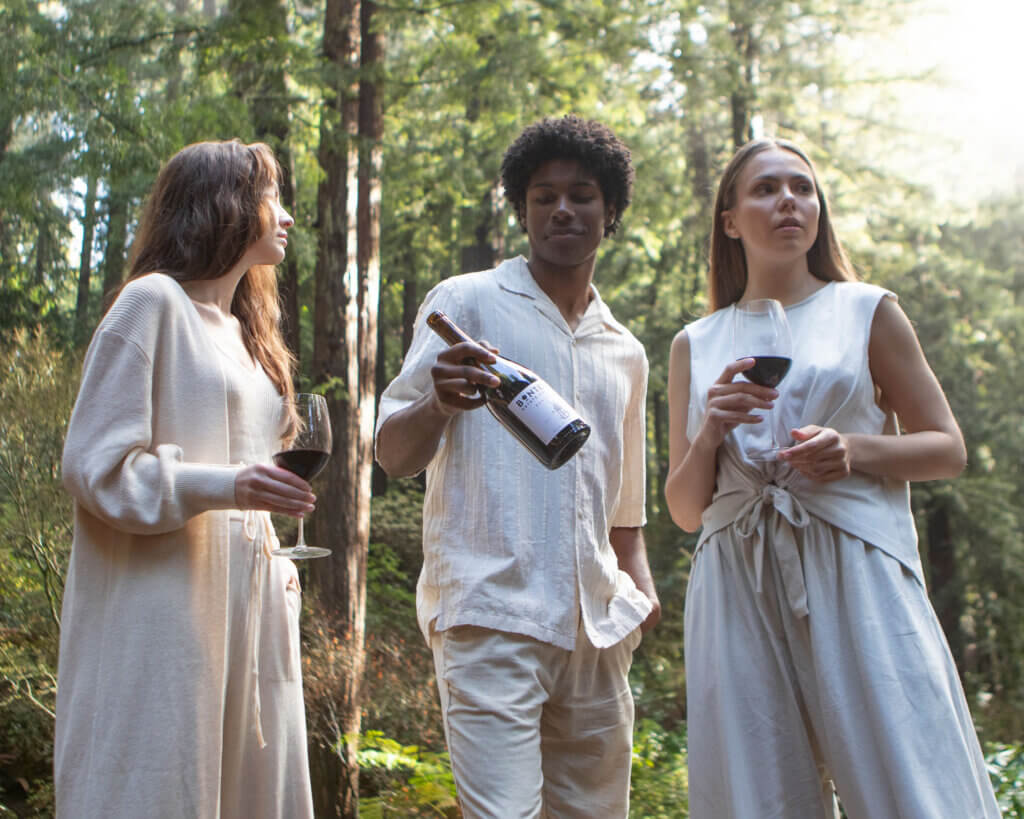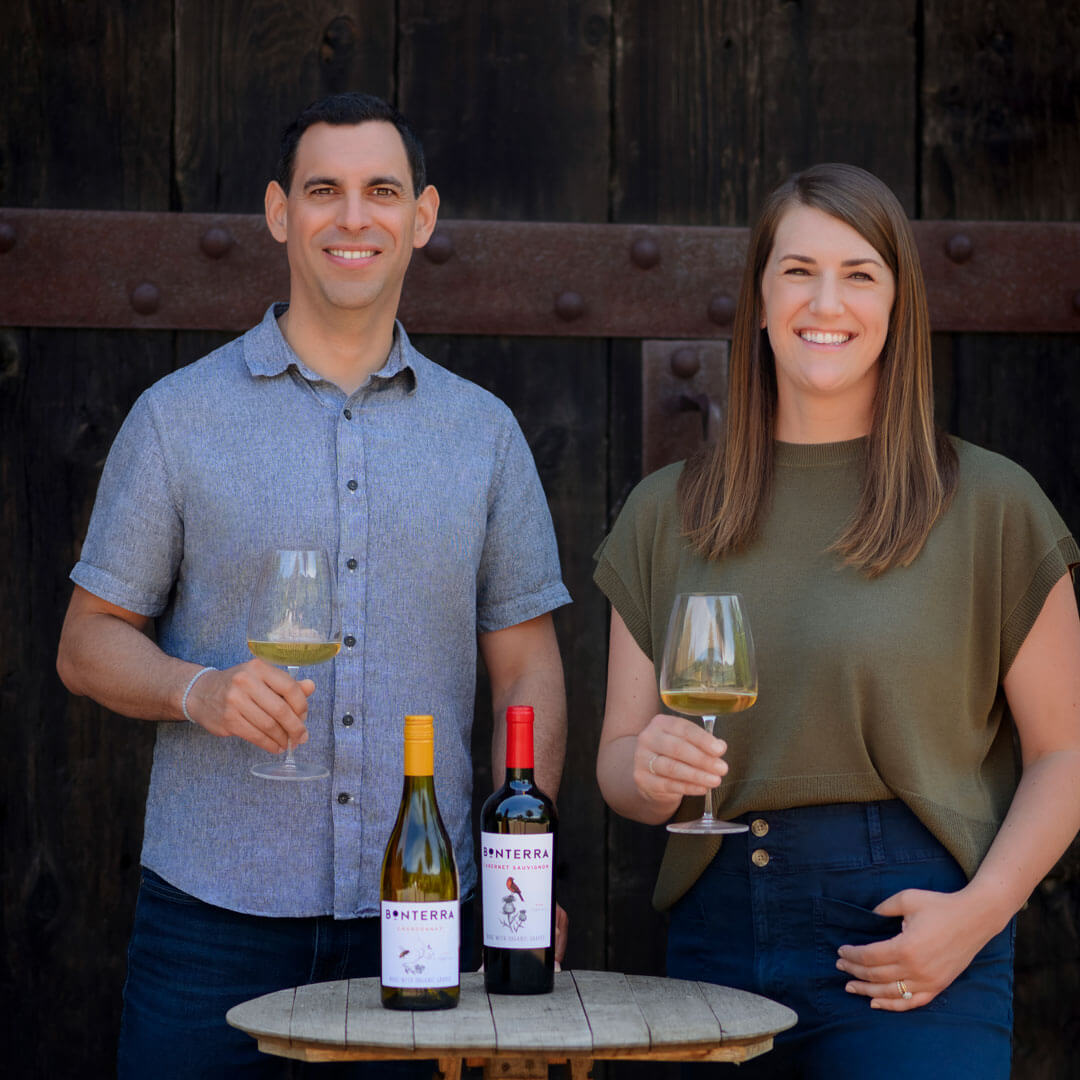A red blend wine is exactly what it sounds like (finally, an aspect of wine that isn’t complicated at first glance), a mix of two or more different grape varieties, such as Cabernet Sauvignon and Merlot or Grenache, Syrah and Mourvèdre. These varieties are mixes of varying percentages, either according to the law of the land (more on that shortly), based on tradition, or whatever the winemaker thinks makes a great wine.
Essentially the winemaker is looking to craft a well-balanced wine by using grape varieties that each bring a different element to the final blend, like tannin, acidity, power or fruitiness. While wine blends have been around for centuries, some even dating back thousands of years, their popularity has surged in the last decade. This is especially true in New World wine regions, where winemakers have the freedom to create blends as they see fit—such as aging wine in oak—without being restricted by laws or traditional practices.
What Defines a Red Blend Wine?
There are many wines bottled as single varieties, like Pinot Noir, Chardonnay or Cabernet Sauvignon, but many regions of the world chose long ago to blend different grape varieties together instead. When making a red blend, a winemaker is looking to achieve balance in their final blend; to achieve that a winemaker must balance five elements that ultimately shape how a wine will taste: Tannins, sugars, alcohol, acidityand fruit. The beauty of a blend is that it allows multiple varieties in varying amounts to contribute to each of those elements. While one grape may bring acidity, another may bring tannins and sugar, and so on.
To illustrate that, let’s look at the most well-known region for red blend wines in the world: Bordeaux.
Bordeaux Blend
Unlike the New World, Bordeaux legally allows only Cabernet Sauvignon, Cabernet Franc, Merlot, Petit Verdot, Malbec, and Carménère in their red blends. However, each wine brings something unique and meaningful to the table. Cabernet Sauvignon, known for its boldness and tannic structure, provides the backbone of the blend. Merlot adds softness and richness, balancing out the intensity of Cabernet Sauvignon. Cabernet Franc brings aromatic complexity, while Petit Verdot contributes color and structure. Malbec, although less commonly used in Bordeaux blends today, can add depth and complexity (1). Carmenere, which is almost entirely gone in Bordeaux, can, when used in a blend, contribute unique notes of smoke, herbs, red berries and rich intense color to blends.
A Bordeaux blend is the most widely copied style of blend in the world, the five major grapes (excluding Carmenere) form the basis for a vast majority of wine blends in the world. Even in wines that are dominant in one variety, say Cabernet Sauvignon it is very common for another of these Bordeaux grapes to play a small supporting role, sometimes even just 1-2% of the total blend.
The Rhone Blend (GSM)
There is another widely popular style of red blend found in France and all over the new world. The Rhone style blend or GSM. These blends originate from the Rhone valley in southern France and are primarily made from three grapes: Grenache, Syrah and Mourvèdre and sometimes with a small amount of Viognier (a white grape) added to the blend to add aromatic floral notes, round mouthfeel and stabilize the color of the wine.
What grapes are in a Red Wine Blend?
So let’s break down the 5 major grapes used to craft the backbones of blends throughout the world and what each contribute:
- Cabernet Sauvignon – Cabernet Sauvignon adds body, an herbal character, and great mid-palate texture (tannin) that finishes on an oaky-note. Overall, the taste profile is big and long.
- Merlot – Merlot at its best is very similar to Cabernet Sauvignon. Still, Merlot’s slightly more cherry fruit flavors and more refined, pin-cushion tannins offset the herbal nature of the Cabernet varieties. (BTW, Libournais, or “right bank” Bordeaux, wines feature a prevalence of Merlot and Cabernet Franc).
- Syrah – Syrah comes into this blend right up front with bold, black fruit and meaty black pepper flavors, as well as deep color. The softer finish in Syrah helps smooth out some of the tingle in Grenache.
- Grenache – For what Grenache lacks in color it makes up for in fruit, alcohol, and finish. Grenache typically offers startling red berry flavors and a juicy mid-palate that ends on a tingly, sometimes herbal-citrus finish.
- Pinot Noir – Believe it or not, Pinot Noir is a blending grape but only in very specific circumstances. Namely…Sparkling wine! Pinot Noir is regularly used to craft wines in Champagne and adds Body, structure, aroma, and complexity to wines. (2)
Popular Red Wine Blends
Now that we have talked about the major grapes that go into red blends, let’s look at specific red wine blends from all over the world.
Right Bank Bordeaux Blend – Merlot is dominant in Right Bank Bordeaux blends, and sourced from the Northern side or Right bank of the Gironde River
Left Bank Bordeaux Blend – Cabernet Sauvignon is dominant in Left Bank Bordeaux blends, and sourced from the Southern side or Left bank of the Gironde River.
GSM – Also known as Côtes du Rhône Blend this classic concoction of Grenache, Syrah and Mourvèdre is from the Rhone valley
Pinot Noir Blends – This is new, and often a way for producers to keep Pinot Noir prices lower and compensate for lower quality fruit. To make California Pinot Noir taste bolder and lusher, a dollop of Syrah is sometimes added to the mix. You don’t see this too much in the higher-end wines, but it tends to be more common in the affordable wines where good color and body are harder to come by. Because of the relaxed laws for single-varietal labeling in California (wines need only contain 75% of the variety to be called Pinot Noir), it’s often not mentioned on the label. Still, if you ever come across an exceptionally dark Pinot Noir from the Central Coast, a touch of Syrah might be the reason why. (3)
CSM – This blend of Cabernet Sauvignon, Syrah and Merlot is rather unique to Washington, though it is becoming more common in regions like Chile, where these grapes also thrive. Washington’s specialty is a proud lack of specialization. Why? Because nearly every grape seems to grow well in the unique, cool, high desert climate. This innovative blend is a take on Cabernet Sauvignon and Merlot together with Syrah to round it out.
All in all, blends are incredibly versatile. Ultimately they allow a winemaker to pull attributes from different grape varieties and craft something wholly unique. It also allows winemakers to navigate and make the most of challenging vintages. When a late frost destroys a Merlot harvest, by freezing their buds (Merlot tends to be much earlier than other grapes) winemakers can compensate by adding more of another grape to the blend.
Blends in the New World, namely California tend to be smoother, richer and more complex than stand alone varieties and often showcase a winemaker’s penchant for certain varieties and styles, allowing them to showcase their personality through the wine. This is a refreshing change from the tradition bound and often legally binding blending rules in other parts of the world. There are thousands of grape varieties in the world and winemakers always have lots of room to play and experiment when it comes to blends.
Bonterra winemakers make several blends, each calling on the heritage of the grapes used in it, but also expressing the personality of the winemaker and the region. The Butler is an exceptional California style red blend coming from Mendocino. Rhone blend –esque, with Syrah dominating, the wine also incorporates Petit Sirah (a classic blend grape of Mendocino) with Grenache, Mourvèdre and even a little Viognier. The wine embraces tradition but also leaves room for the winemaker to explore and experiment and embrace the terroir of Mendocino.
Discover the Perfect Red Blend with Bonterra Wine
As we’ve explored the unique characteristics and versatility of red blend wines, it’s clear that blending allows winemakers to craft something truly exceptional, balancing flavors, aromas, and textures. Bonterra, a leader in organic farming, takes this art to the next level by combining traditional techniques with innovative practices rooted in environmental stewardship.
At Bonterra, our commitment to organic winemaking ensures that every bottle reflects the purity of the land and the skill of our winemakers. Whether you’re savoring a classic red blend like The Butler, our Estate Red Blend, or exploring our diverse offerings, you can taste the difference that comes from a deep respect for nature.
Dive deeper into our premium red wine variety bundle, made with regenerative organic grapes from our estate vineyards in Mendocino County—awarded Wine Enthusiast‘s Wine Region of the Year in 2024. This collection features high-scoring red wines, each showcasing the rich, complex flavors that our sustainable practices help cultivate.
Join the Bonterra Wine Club to enjoy exclusive access to our finest blends, crafted with care and dedication to sustainability. Experience the convenience of having our red wines and white wines delivered to your door when you buy wine online through our website, knowing you’re supporting an organic winery that prioritizes the planet as much as the quality of your wine.
Consider gifting a red wine gift set or any of the Mendocino wines from our collection, the perfect present for any wine lover, featuring a variety within the red family. Explore our selection today and discover how Bonterra wine can elevate the tasting experience for wine enthusiasts everywhere.
Sources:




